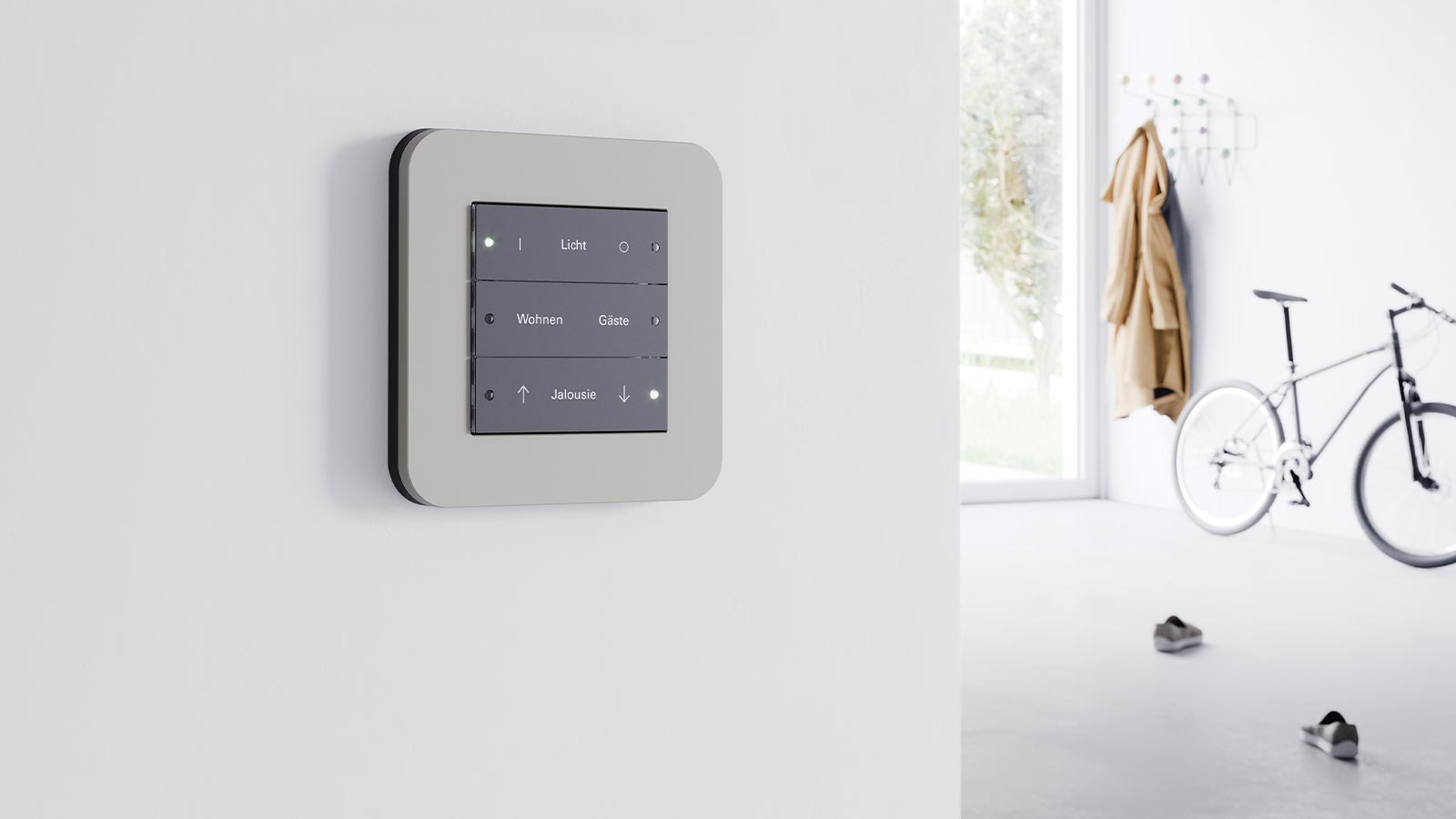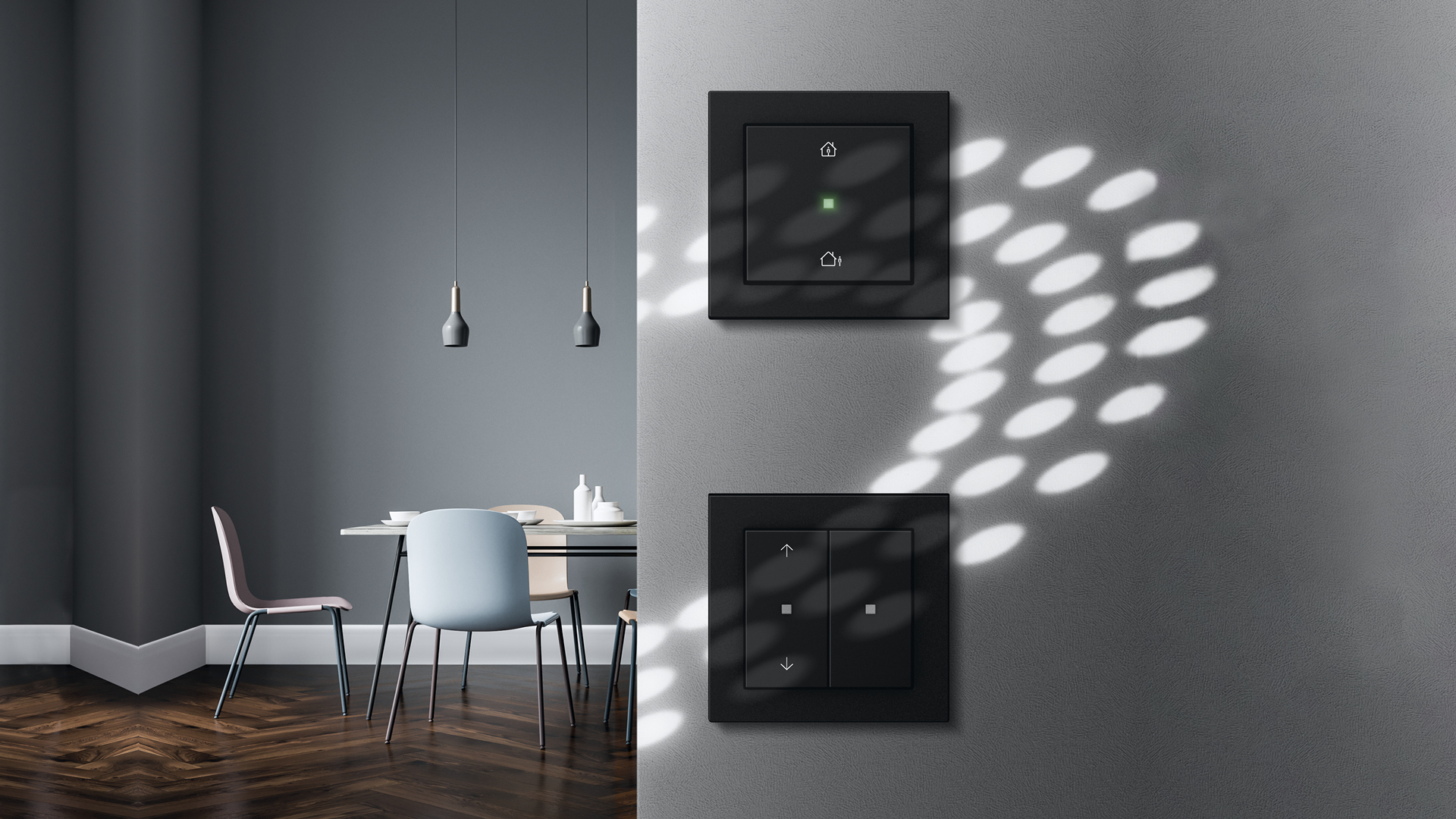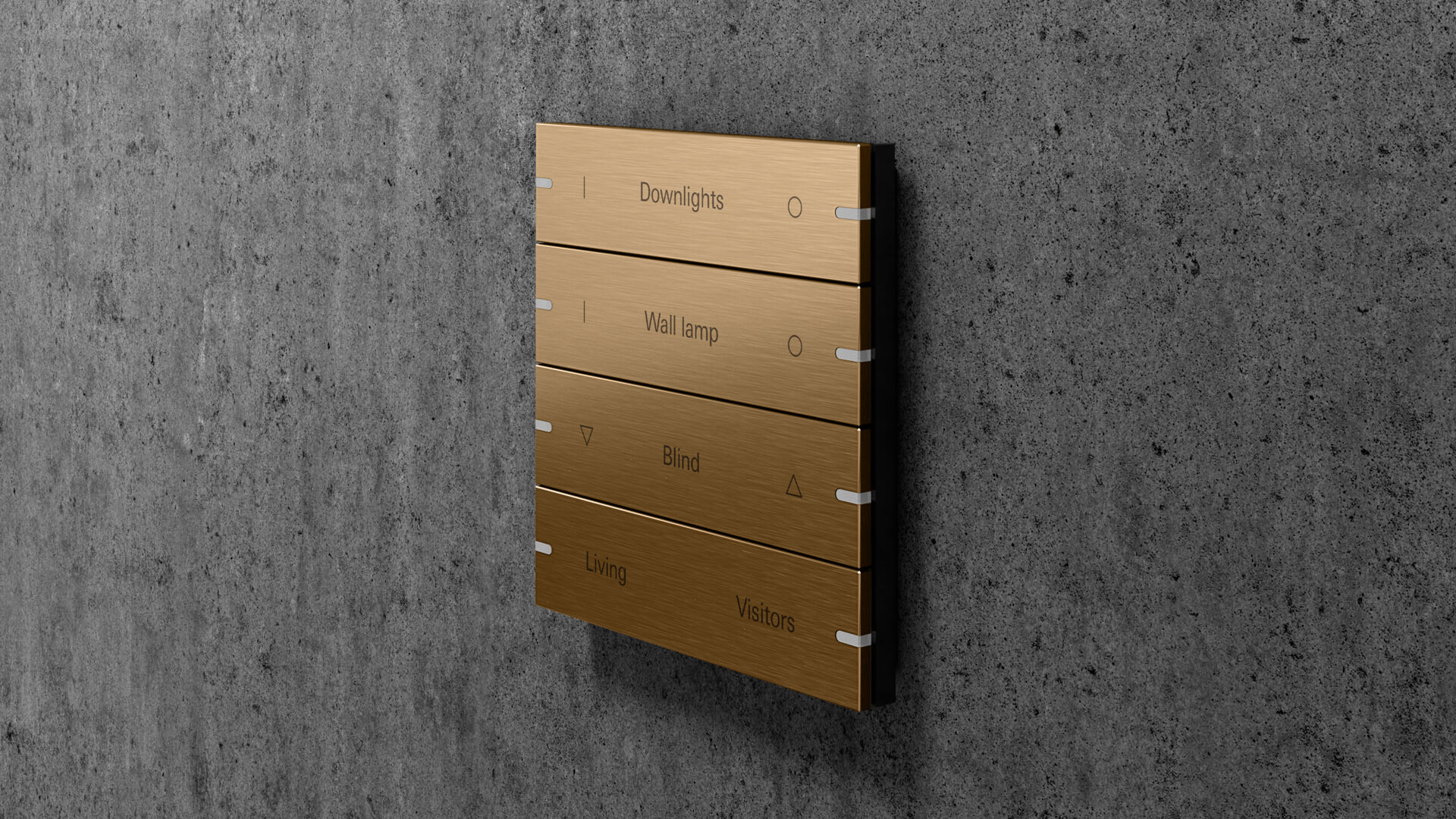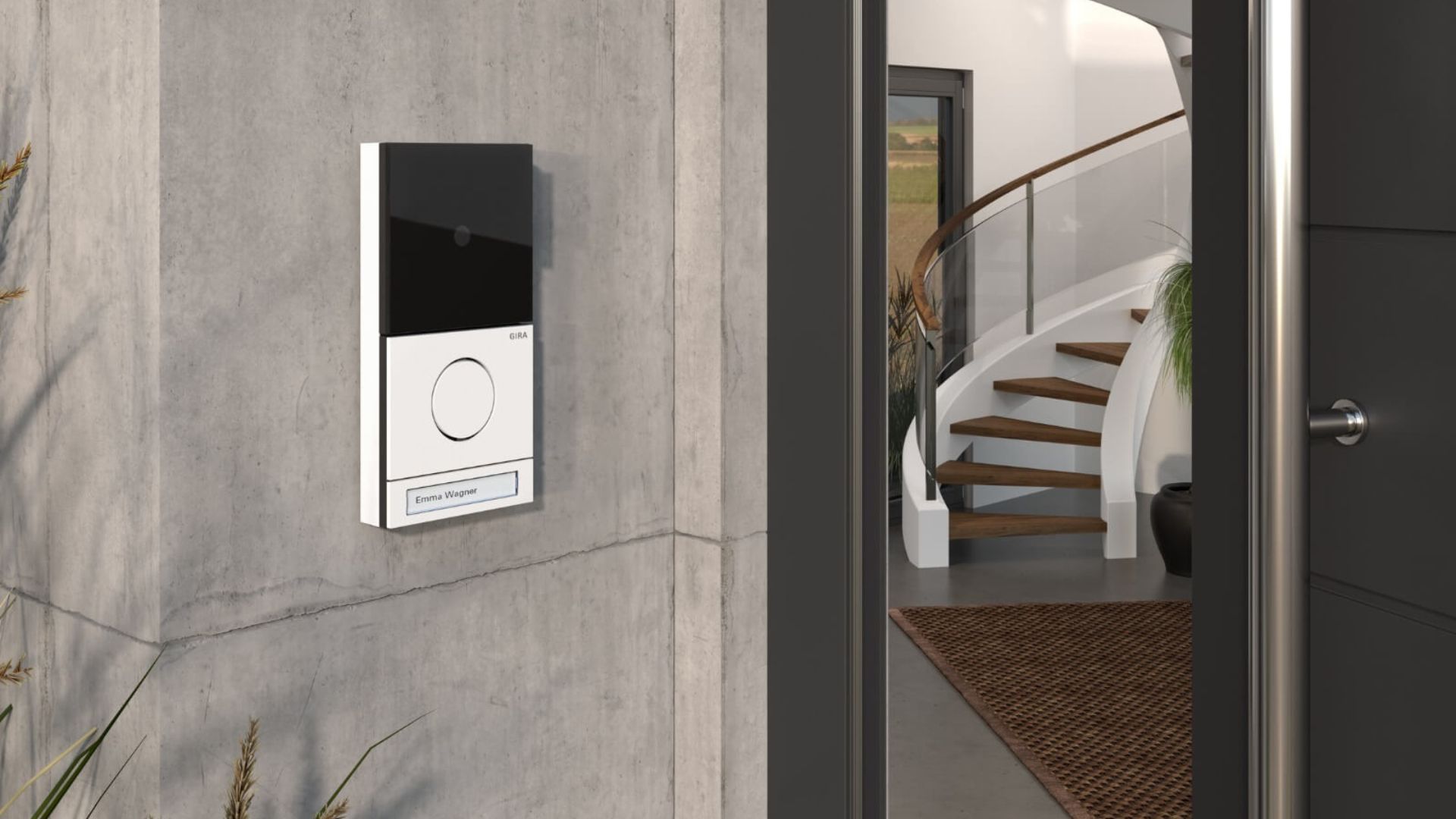
Your living space should offer you exactly the kind of comfort you need. The easiest way to achieve that is modern technology – but where does one even start? We’ve got seven tips to help you plan a Smart Home from scratch.
1. Planning Smart Home features
First and foremost, ask yourself: What should your home be capable of? Do you just want to cover the essentials, i. e. lighting, blind, and heating control? Or would you like to integrate other entertainment and household devices? The functional range forms the basis for your Smart Home plans: depending on your requirements, there are plenty of options available. But don’t worry – in case your needs might change over time, you can always retrofit a Smart Home as well.
2. Planning your Smart Home system
Gira System 3000 is the perfect choice if you want a straightforward solution that includes all the basic functions for everyday life. It allows you to control your lights, blinds, and room temperature – using switches, automated time schedules, or a Bluetooth app. You’d like to go a bit further than that? Then you can choose between wired and wireless systems:
With the Gira KNX system, you’ll enjoy the maximum level of comfort. Checking up on your house while on the road or connecting devices from different manufacturers? Sure, no problem! To make that possible, special BUS cabling must be laid throughout your house. Therefore, wired KNX systems are a good option when building a new Smart Home.
For older houses and flats, we recommend a wireless solution such as the Gira KNX RF system. In this case, the network is based on radio transmission and therefore does not require any additional cabling. You’ll still have the same control options that you can use in a wired KNX Smart Home: via app, voice command, or the central unit Gira G1.
3. Planning your Smart Home installation
Apart from your personal needs and wishes, the given circumstances also play an important role in the decision process. Different living situations can pose different challenges while you plan a Smart Home design:
How large is the area that your network will have to cover?
Does your house extend across several floors? It’s important to consider the reach of integrated devices, especially if you want to install a wireless system.
How about single rooms: would you like to have automated heating control in each one? Or do you want to limit certain functions to specific areas?
Last but not least: are you able to do extensive renovation work or would you rather keep the effort at a minimum? If you live in a rental or an older property, it’s best to opt for a wireless solution that can be retrofitted easily. You’re going to plan a new smart house anyways? Then you should consider installing a wired KNX system: it provides a solid infrastructure that allows you to explore the full potential of your building technology.
4. Planning your Smart Home control
You have figured out which devices you want to place at which spots? Then it’s time to think about the operating elements. In addition to a compatible app and voice assistants, you can also use smart switches to control your house. These are capable of much more than turning lights on or off:
If you’re planning a KNX Smart Home, we recommend the Gira pushbutton sensor 4.95. It enables you to configure up to eight individual functions. Integrated LEDs will show you the current status of connected devices.
In wireless KNX Smart Homes, manual control works via the battery-powered Gira RF pushbutton sensor for KNX. It can be mounted on all kinds of surfaces: wood, concrete, or even glass panes. At the same time, you can use the hand-held transmitters to activate different functions from each room.
The Gira G1 is a good control option either way. With a touchscreen and high-resolution display, this operating unit makes it easy to keep an overview of all functions – or configure and monitor individual processes.
5. Planning Smart Home security
Even the most innovative building technology will be of little use if it stays prone to errors. As you plan a Smart Home, you should always factor in the necessary safety precautions. This not only includes protecting sensitive data from unauthorised access – you also need to prepare for emergencies such as fire or break-ins. That’s where smart sensors prove particularly useful. By way of example, Gira smoke alarm devices register even the smallest smoke particles and changes of temperature. They will thus notify you immediately when something starts burning in your house – without triggering false alarms due to cooking fumes or dust. Outside, automated lighting systems go a long way in scaring off burglars: the Gira motion detector Cube reacts to both ambient brightness and thermal movement, switching on outdoor lights whenever someone approaches your house at night.
6. Planning door communication for your Smart Home
Living comfort begins at the front door: giving guests a warm welcome is just as important as keeping unwanted visitors at a safe distance. Luckily, a smart door station such as the Gira System 106 can do both. On the interface of the Gira G1, you can see who’s ringing your bell and talk to them before opening the door. With its modern minimalist design, Gira System 106 makes for a visual highlight at any entrance – either as a flush- or surface-mounted variant.
Got a tendency to forget or lose your keys? Then it might be a good idea to add a special locking system to your Smart Home plan. With Gira Keyless In, you don‘t need any keys to let yourself in: just use a personal code or fingerprint instead.
7. Smart Home planning with a professional
When it comes to building technology, you won’t get far without comprehensive know-how and long-time experience. That’s why you should always consult with an expert once you have a rough idea of the system you want to install. Gira specialist partners in your respective country will support you throughout the whole Smart Home planning process – according to your individual living situation.



